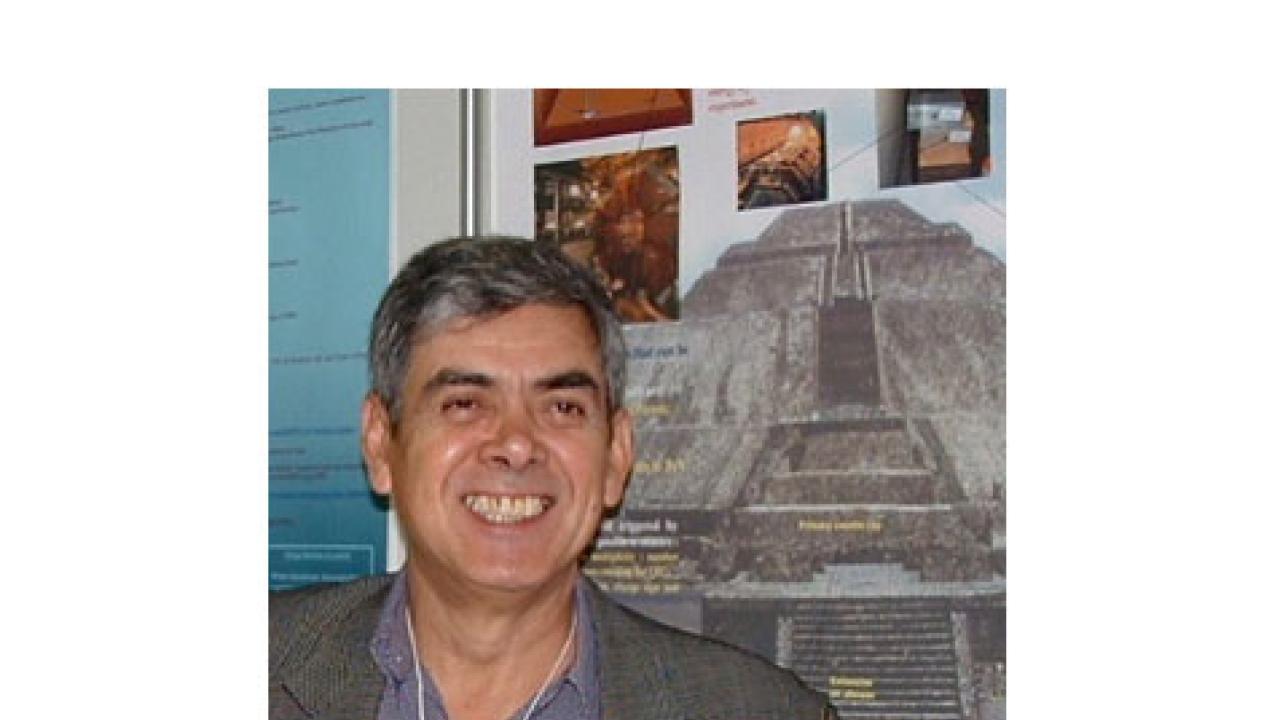
ICTP was saddened by the news of Arnulfo Zepeda Dominguez's passing in November.
Arnulfo, an ICTP Senior Associate from 1998 to 2003, was the founding director of the Meso American Institute for Science (MAIS), a research institute located in Tuxtla Gutiérrez, Chiapas, on the premises of Universidad Autónoma de Chiapas (UNACH). The initiative was started by ICTP, to establish a network of partner UNESCO institutes around the globe.
Arnulfo took to this task with great enthusiasm, packed his luggage and with no hesitation moved to Tuxtla, where he was from 2011 to 2018. MAIS was created from nothing by Arnulfo. He established a computer centre, the library, a research group in Cosmic Rays Physics and a group of collaborators to form young students from Chiapas and Central America.
At the beginning of 2020, MAIS was designated as a Category 2 UNESCO institute and now, under the direction of Arnulfo’s successor Luis Felipe Rodriguez, is ready to carry forward Abdus Salam's mission to promote science in developing countries and to enable younger generations to enter the international scientific competition.
Born in 1943 in San Luis de Potosí, Mexico, Arnulfo Zepeda graduated in Nuclear Engineering at the University of Prague, Czech Republic, in 1967. From 1967, Arnulfo studied in CINVESTAV (Centro de Investigación y de Estudios Avanzados of Instituto Politécnico Nacional), where he obtained his Doctorate in Physics in 1970, and at Rockefeller University, New York, where he obtained his PhD in Elementary Particle Physics in 1972.
Arnulfo's initial interest was in the theory of particle physics, and he became known for his studies in chiral symmetry breaking, nucleon form factors and the up quark mass. He created a young and very active particle physics group in CINVESTAV and produced original investigations in the Standard Theory and beyond, becoming one of the leading figures in theoretical physics in Mexico and Latin America.
In the late 90s, Arnulfo’s attention turned to ultra-high-energy cosmic rays. Leading Mexico participation in the construction and exploitation of the Auger Observatory in Malargüe, Argentina, Arnulfo contributed significantly to important discoveries such as establishing the GZK ultra-high-energy cut-off, the nuclear composition of UHE cosmic rays and the observation of possible point-like cosmic ray sources. His activity in cosmic ray physics continued in Mexico, with the promotion of the gamma rays observatory HAWC (High Altitude Water Cerenkov) and his participation in the collaboration board.
In 2002 he joined the ALICE experiment at CERN, where he participated in the installation of the ACORDE detector that will act as a cosmic ray trigger and, together with other ALICE sub-detectors, will provide precise information on cosmic rays with primary energies around 1015 - 1017 eV.
Arnulfo was elected Fellow of the American Physical Society in 1993, for the original research in high energy physics and phenomenology; for leadership in high energy physics in México; and for initiatives in promoting closer communication among physicists in North America.
Arnulfo has greatly contributed to the advancement of physics in Mexico and Latin America. He founded the Escuela Mexicana de Partículas y Campos, chaired the División de Partículas y Campos of Sociedad Mexicana de Física (SMF) in 1991-1992 and was elected President of SMF in 1992-1994.
He directed more than 30 theses and was considered an enthusiastic and outstanding professor, devoted to his students.
In the years 2005-2016, Arnulfo promoted Europe-Latin America scientific exchanges as a member of the executive board of two projects financed by the European Commission: HELEN (High Energy physics Latin-American European Network) and EPLANET (European Particle Physics Latin American NETwork). These projects have mobilised exchanges for more than 3000 person-months, making possible a significant participation of physicists from Latin America in the discoveries made at the Large Hadron Collider, including the observation of the Brout-Englert-Higgs boson in 2012.
Luciano Maiani and Verónica Riquer
Former ICTP Director Fernando Quevedo, who worked closely with Arnulfo in establishing MAIS, added, "He was one of the leading figures in high energy physics in Mexico and all of Latin America, both in theoretical and experimental aspects. He was involved in main experimental collaborations at CERN and other experiments and was a major figure training new generations of physicists in the region. It is a big loss for science in Mexico and the world. But most importantly, we lost an excellent human being and a great friend."
















